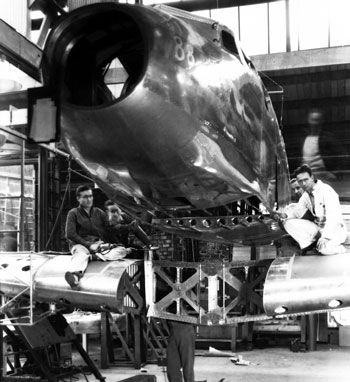Ocean exploration team announces that legendary aviator Amelia Earhart's crashed plane has been found in the Pacific Ocean

by
Amelia, an aviator who became the first woman to successfully fly solo across the Atlantic Ocean, but her whereabouts are shrouded in mystery as her aircraft wreckage and body have never been found since she disappeared during her attempt to circumnavigate the world . ・An investigation company announced that they had discovered Earhart 's plane.
Amelia Earhart's plane may have crashed in the heart of the Pacific Ocean, explorer claims | Live Science
https://www.livescience.com/archaeology/have-we-found-sonar-evidence-of-amelia-earharts-lost-plane-not-so-fast-experts-say
Wreckage of Amelia Earhart's Lost Plane Found, Explorers Claim : ScienceAlert
https://www.sciencealert.com/wreckage-of-amelia-earharts-lost-plane-found-explorers-claim
Connecting the Dots
https://tighar.org/Projects/Earhart/Archives/Research/Bulletins/56_WhereIsElectra/56_where3.htm
On January 27, 2024, South Carolina-based ocean research company Deep Sea Vision (DSV) discovered Earhart and navigator Fred Noonan on the ocean floor about 100 miles (about 160 kilometers) off the coast of Howland Island in the Pacific Ocean. has released an underwater sonar image of what appears to be a Lockheed Electra 10E.
On July 2, 1937, Amelia Earhart and navigator Fred Noonan took off from Papua New Guinea, nearing the end of their record-setting journey around the world never to be seen again. Until today.
— Deep Sea Vision (@DeepSeaVision) January 27, 2024
Deep Sea Vision found what appears to be Earhart's Lockheed 10-E Electra. pic.twitter.com/CTVDI6Jxpg
Tony Romeo, CEO of DSV and a former aviator himself, said, ``One of the most unique and important features of Earhart's plane was the distinctive twin vertical stabilizers in the tail. , it shows what looks like two strong echoes coming out from where the two vertical stabilizers are.'
Also, since the plane appears to have remained intact, Romeo said, ``We believe that Earhart would have made every effort to land the plane calmly on the ocean surface, and the sonar image shows that 'The traces of airplanes that appear here suggest that this may actually have been the case.'
The DSV exploration team spent 90 days searching 5,200 square miles (about 13,500 square kilometers) of the Pacific ocean floor, more than all previous searches combined, the statement said. That's what he said.

by
Earhart, who gained fame in 1932 by becoming the first woman to fly solo across the Atlantic Ocean, took off from Oakland, California on May 20, 1937, aiming to become the first woman to fly around the world, but her last communication over the Pacific Ocean I lost contact with him.
There are various theories about what happened after that, but Romeo says, ``This discovery is due to the application of the so-called ``date line theory'' proposed by former NASA employee Liz Smith in 2010.''
This theory is that Noonan, who was serving as a navigator, forgot to set his calendar back one day when he flew over the International Date Line, which caused his navigational calculations to go awry using the stars as landmarks, leading him to fly 60 miles west ( There was an error of approximately 100 km).

by Brecht Bug
Some experts say there is a good chance that the underwater sonar images released this time are of Earhart's plane, but others dispute this view. For example, the International Group for Historic Aircraft Recovery (TIGHAR) reports that Earhart washed ashore on the island of Kiribati in the Pacific Ocean, where she lived and died. That's what I think.
TIGHAR told the science news site Live Science, ``The Lockheed Electra 10E is built around a very strong center section that features a huge 'main beam' that extends through the cabin and from one engine to the other. On the other hand, the plane in the sonar image shows the wing bent backwards, and for Earhart's plane to look like this the entire center section would have to have failed at the wing-to-fuselage junction, which is impossible. ” he said.
The photo below is a photo of the 'main beam' of Earhart's plane, which TIGHAR points out.

In response, Mr. Romeo said, ``It is important to note that sonar data shows that the farther away the object is, the more it appears to be elongated, so the wing appears to be elongated or curved. 'This is also the case with the tail. If you straighten both the tail and wings, the aircraft in the sonar image looks exactly like Earhart's Lockheed Electra 10E.'
DSV has an autonomous unmanned probe that can explore underwater, but the sonar image data announced this time was discovered two months after the data was acquired, and by that time it was already impossible to return to the discovery point. He said he was no longer able to do it. Therefore, DSV has not yet been able to take any photographic evidence to confirm the matter.
DSV is keeping the exact location of the discovery confidential for the time being and plans to conduct further searches in the future.
Related Posts:
in Vehicle, Posted by log1l_ks







